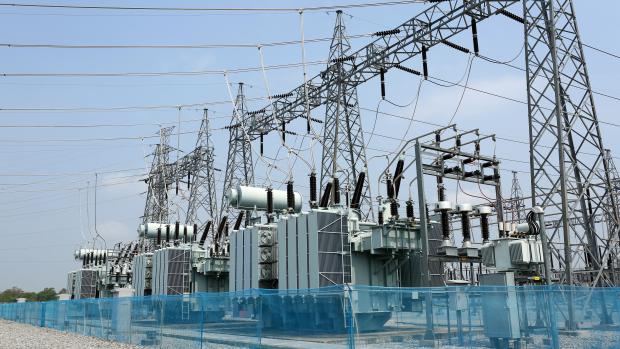New York State to collaborate with New York University on digital tool to detect issues in large power transformers
Research study to develop prototype to help power industry save money and avoid outages and failures

The New York Power Authority (NYPA) is leading a study to validate a technique that could potentially help the utility industry digitally monitor transformers to better detect problems without taking the units out of service. The research, co-led by New York University Tandon School of Engineering (NYU Tandon) and supported by a nearly $190,000 grant from the New York State Energy Research and Development Authority (NYSERDA), will result in a detector prototype that will be tested in the Power Authority’s Advanced Grid Innovations Laboratory for Energy (AGILe), a simulation facility that helps develop new technologies and demonstrate new solutions for energy systems.
Titled “Online Detection of Winding Deformations in Large Power Transformer,” the study is intended to bring a technique that has proven effective in a university setting a step closer to industry adoption. The new technique has been validated by computer simulation and bench testing on small transformers.
“Unique research collaborations like this one with NYU Tandon, supported by NYSERDA, enable the Power Authority and New York State to innovate and modernize its electric grid for the benefit of all New Yorkers,” said Justin E. Driscoll, New York Power Authority president and CEO. “As we upgrade our transmission system and plan the grid of the future, it is research like this that will enable us to monitor and update our transformers so that the state power system is reliable and efficient.”
Doreen M. Harris, president and CEO, NYSERDA said, "Modernizing the state’s electric grid infrastructure is essential to ensuring the necessary capacity and transmission capabilities for continued reliability and resiliency. NYSERDA is pleased to support our sister agency in testing and advancing technology that can proactively identify potential issues with transformer operation without incurring costly maintenance outages as we transition to a dynamically managed zero-emission electric grid for New York State.”
The prototype will be built by NYU Tandon and tested in NYPA’s AGILe lab.
"Large power transformers are the backbone of electricity systems, designed to operate for decades,” said Francisco de Leon, NYU Tandon professor of electrical and computer engineering and member of NYU Tandon Power Lab. “But unchecked accumulated mechanical deformations triggered by short circuits elsewhere in the system cause expensive repairs, lengthy downtime, and even fire hazards. This collaboration with NYPA continues NYU Tandon Power Lab's tradition of working in real world applications, in this case by creating technological safeguards to help identify when transformers need critical maintenance."
AGILe simulates portions of New York State’s transmission grid and tests the impact of technologies and systems such as distributed energy resources, electric vehicles, energy storage, cyber security, sensors and automation. The study will build 3D models for large power transformers and simulate deformations of the winding disks.
The idea is to monitor online and continuously the voltage and currents of the transformer, and accurately calculate the leakage impedance of the transformer based on those measurements. The proposed platform will then send an alarm to the operator when the transformer leakage reactance has changed more than the recommended 3% by Institute of Electrical and Electronics Engineers (IEEE) standards. This enables early detection of deformation in transformer windings due to forces and stresses from the short circuit events.
“We believe power utilities will be more open to adopting this technology if the concept is tested in an industry lab,” said Alan Ettlinger, senior director of Research, Technology Development and Innovation. “Through this study, we hope to be able to give utilities confidence that this technique is reliable and will work for full-size transformers in the field.”
Normally transformers need to be taken out of service for a Frequency Response Analysis (FRA) test to be performed. The proposed winding deformation detection technique would avoid disrupting the system operation, which is an expensive process. If successfully implemented, this new technology would avoid the cost of taking transformers offline to perform diagnostics to detect winding deformation, saving approximately $15,000 per day as well as preventing the cost of larger equipment failures that can cost up to $1.5 million per incident.
NYSERDA’s Electric Power Transmission and Distribution Future Grid Challenge program supported the project with funding from the Clean Energy Fund. Projects awarded under this initiative help establish a pathway for products and services to gain market entry by addressing existing technical and economic barriers within a specific challenge area associated with creating a high-performing, future grid.
If the NYPA-NYU project is successful, future phases could focus on field demonstration and commercialization.
About the New York Power Authority
The New York Power Authority (NYPA) is the largest state public power organization in the nation, operating 16 generating facilities and more than 1,400 circuit-miles of transmission lines. More than 80 percent of the electricity NYPA produces is clean renewable hydropower. NYPA finances its operations with revenues earned in large part through sales of electricity. For more information visit www.nypa.gov and follow us on Twitter, Facebook, Instagram, Tumblr and LinkedIn.
About the New York University Tandon School of Engineering
The NYU Tandon School of Engineering is home to a community of renowned faculty, undergraduate and graduate students united in a mission to understand and create technology that powers cities, enables worldwide communication, fights climate change, and builds healthier, safer, and more equitable real and digital worlds. The school’s culture centers on encouraging rigorous, interdisciplinary collaboration and research; fostering inclusivity, entrepreneurial thinking, and diverse perspectives; and creating innovative and accessible pathways for lifelong learning in STEM. NYU Tandon dates back to 1854, the founding year of both the New York University School of Civil Engineering and Architecture and the Brooklyn Collegiate and Polytechnic Institute. Located in the heart of Brooklyn, NYU Tandon is a vital part of New York University and its unparalleled global network. For more information, visit engineering.nyu.edu.




